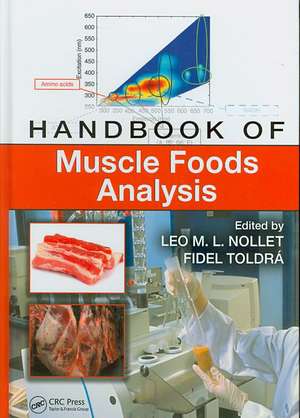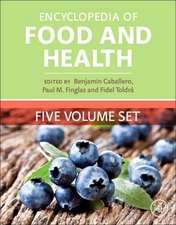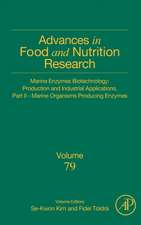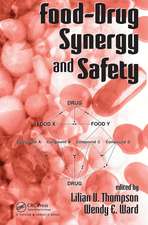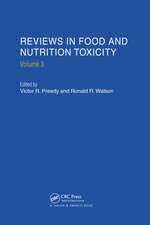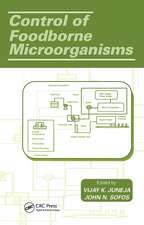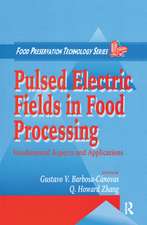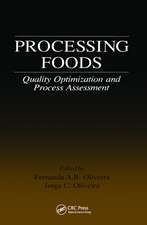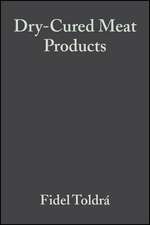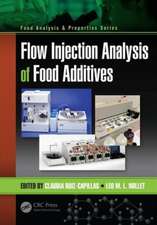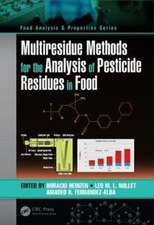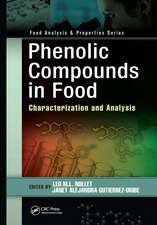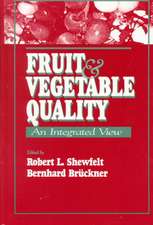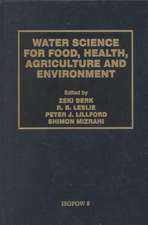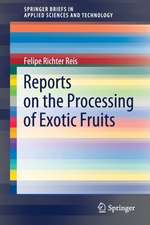Handbook of Muscle Foods Analysis
Editat de Leo M.L. Nollet, Fidel Toldraen Limba Engleză Hardback – 10 noi 2008
Co-Edited by Fidel Toldra - Recipient of the 2010 Distinguished Research Award from the American Meat Science Association
With contributions from more than 35 international experts, this authoritative volume focuses 16 of its chapters on the analysis of main chemical and biochemical compounds, such as:
- Peptides
- Lipases
- Glucohydrolases
- Phospholipids
- Cholesterol products
- Nucleotides
Under the editorial guidance of world-renowned food analysis expert, Leo M.L. Nollet with Fidel Toldrà, this 43-chapter resource clearly stands apart from the competition. Divided into five detailed sections, it provides in-depth discussion of essential sensory tools to determine color, texture, and flavor. It also discusses key preparation, cleanup, and separation techniques. This indispensable guide brings available literature into a one-stop source making it an essential tool for researchers and academicians in the meat processing industry.
Preț: 1430.07 lei
Preț vechi: 1984.49 lei
-28% Nou
Puncte Express: 2145
Preț estimativ în valută:
273.63€ • 285.73$ • 225.96£
273.63€ • 285.73$ • 225.96£
Carte tipărită la comandă
Livrare economică 15-29 aprilie
Preluare comenzi: 021 569.72.76
Specificații
ISBN-13: 9781420045291
ISBN-10: 1420045296
Pagini: 988
Ilustrații: 143 b/w images, 135 tables and 30 equations
Dimensiuni: 178 x 254 x 51 mm
Greutate: 1.88 kg
Ediția:1
Editura: CRC Press
Colecția CRC Press
ISBN-10: 1420045296
Pagini: 988
Ilustrații: 143 b/w images, 135 tables and 30 equations
Dimensiuni: 178 x 254 x 51 mm
Greutate: 1.88 kg
Ediția:1
Editura: CRC Press
Colecția CRC Press
Public țintă
ProfessionalCuprins
CHEMISTRY AND BIOCHEMISTRY. Importance of Analysis and Some Basic Concepts. Amino Acids. Peptides. Proteins. Proteomics. Muscle Enzymes: Proteinases. Muscle Enzymes: Exopeptidases and Lipases. Muscle Enzymes: Glycohydrolases. Fatty Acids. Triacylglycerols. Analysis of Phospholipids in Muscle Foods. Cholesterol and Cholesterol Oxides in Meat and Meat Products. Determination of Oxidation. Aroma. Carbohydrates. Nucleotides and Its Derived Compounds. PROCESSING CONTROL. Basic Composition: Rapid Methodologies. Moisture and Water-Holding Capacity. Microstructure of Muscle Foods. Physical Sensors and Techniques. NUTRITIONAL QUALITY. Composition and Calories. Essential Amino Acids. Trans and n-3 Fatty Acids. Vitamins. Minerals and Trace Elements. SENSORY QUALITY. Color Measurements on Muscle-Based Foods. Measuring Meat Texture. Techniques for Sampling and Identification of Volatile Compounds Contributing to Sensory Perception. Sensory Descriptors. Sensory Perception. Sensory Aspects of Cooked Meats. SAFETY. Methods for Evaluating Microbial Flora in Muscle Foods. Methods to Predict Spoilage of Muscle Foods. Microbial Foodborne Pathogens. Parasites. Mycotoxin Analysis in Muscles. Detection of Genetically Modified Organisms. Detection of Adulterations: Addition of Foreign Proteins. Stable Isotope Analysis for Meat Authenticity and Origin Check. Determination of Persistent Organic Pollutants in Meat. Growth Promoters. Antibiotic Residues in Muscle Tissues of Edible Animal Products. Index.
Descriere
Muscle foods, which include meat, poultry, and fish, represent some of the most important foods in Western societies. Handbook of Muscle Foods Analysis provides a comprehensive overview and description of the analytical techniques and applications of these methodologies. This reference discusses the analysis of chemical and biochemical compounds of muscle foods, technological quality and the use of non-destructive techniques, nutrients in muscle foods, sensory quality, and the analytical tools used to determine color, texture, and flavor. This book also addresses safety aspects and the tools used for detecting pathogens, parasites, allergens, and chemical toxic compounds.
